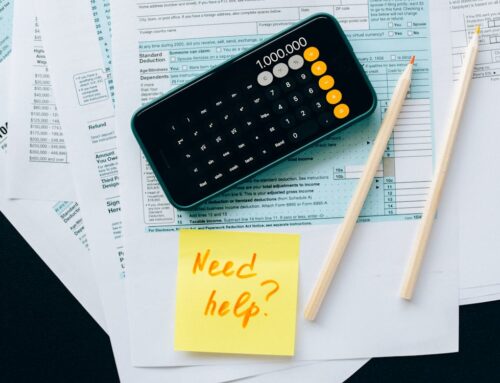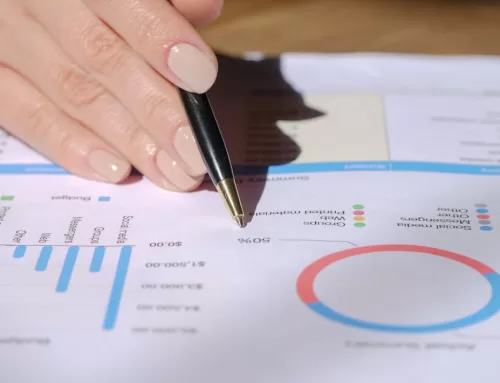Uncollectable accounts receivable and Bad Debts are a fact of life for most businesses. If your firm extends credit to customers, lends money or guarantees obligations of other companies then it’s only a matter of time before something adverse happens in this area. Some firms require upfront payment or progress payments and may be generally immune to these problems. It’s generally a good idea to be prudent about extending credit to others since write-offs sink right to the bottom line of your P&L.
Credit Approvals
To minimize problems, make sure that credit approval is not automatic (“anything under $5000 gets approved without a credit check.”). Make sure that you have an agreement with the actual borrower by checking how they are registered at the state level. For example, a contract with “ABC Builders” may not be valid if the debtor’s name is “ABC Builders, Inc.” There are many ways to then check credit such as calls to similar vendors, a Dunn & Bradstreet Report, or review of bank statements. Establish procedures and keep files backing credit approval decisions including the name of the person approving the deal.
Bad Debt Collection Efforts
Bad debt write-offs are not allowable unless reasonable efforts have been made to contact the debtor / borrower and request payment. Many firms are slow and inconsistent in dealing with these unpopular situations. Remember that “the squeaky wheel gets the oil” and this is one time when it’s good to squeak. Making a series of phone calls and sending increasingly stern letters is cost effective and will solve the majority of problems, but a few will still not pay for either real or frivolous reasons, and ultimately these will need to be recognized in your books.
Accounting Methods for Bad Debt
The accounting treatment of bad-debt write-offs depends on whether your firm is on a cash or accrual basis. Most firms under $5 million in sales are cash-basis, and one interesting effect of write-offs is that there is no real accounting effect since the problem transaction (usually an uncollectable invoice) never really hit your books. In QuickBooks for example, invoices produced for cash-basis companies do not hit the P&L until payment is received. So if an invoice is sent to a customer in May and then determined t0 be a write-off in November, you could:
- Simply delete the invoice from May. This is fast and easy but not a great idea since you will still want to keep track of customers who did not pay, and the extent of bad-debt write-offs (does your firm ultimately write-off 2% or 20% of invoices?) Although invoices do not hit the P&L (only payments), they do appear in Accounts Receivable reports. This will also disturb results from closed accounting periods.In QuickBooks Online bring up the invoice and at the bottom of the screen select “More” and then “Delete.” But this is not the best method.
- Write-off — The treatment here is right out of Accounting 101: issue a credit in your books to accounts receivable and a debit to Bad Debt Expense.In QuickBooks Online this is: “+” sign, “Credit Memo” (under the customers column), and be sure to select the correct customer. Then apply the credit to the uncollectable invoice. Do this by “+” sign and then “Receive Payment” and then select the correct customer. QBO brings up outstanding items for this customer including invoices and credits. Now select the uncollectable invoice from the middle of the screen, and “pay” with the credit memo towards the bottom of the screen. Then “Save and close.” As of the date of the credit memo, the invoice is written-off (but will still appear in reports with an earlier “as-of” date).
- Use the Bad Debts Allowance Method— This is the most robust way to manage bad debt write-offs and should be used by firms with large numbers of invoices (vs, for example, most transactions are in cash). The Bad Debts Allowance method continually estimates uncollected debts and sets aside amounts in advance. In every period, create a debit to Bad Debt Expense (this hits your P&L) and a credit to an allowance for doubtful accounts (a balance sheet account) for the estimated amount. Then, as uncollectable situations emerge, credit to Accounts Receivable and debit the Bad Debts Allowance. This will yield the correct A R balance while still tracking overall bad debts losses. Note that only actual / direct write-offs are allowed for tax purposes while the Bad Debts Allowance method is used for financial reporting and will give management a better overall picture under generally accepted accounting principles (GAAP). Implementing and managing this setup can be complex and requires a good understanding of accounting, so consider using a QB ProAdvisor or similarly qualified expert.
Write-Offs and the GAAP Matching Principle
Note that under this method, bad debt expenses from a previous accounting period are recognized in a different period, which violates the GAAP Matching Principle. So, if an invoiced sale is entered in August of last year but determined to be uncollectable in January of this year, the Bad-Debts Expense from last year goes against revenue from this year. An accounting expert should help determine the best way to estimate and treat this.
Bad Debt and Taxes
In all cases bad-debt write-offs are deductible for tax purposes IF you have previously recognized the associated revenues (a la accrual method). Under cash-basis accounting, the debt was never counted as income and for this reason cannot be written off on tax returns.
Accounts Receivable in Bankruptcy
If at any time during the collection process (and 90 days thereafter) the debtor formally declares bankruptcy – relax. There is not much that can be done and collection efforts must stop since the courts are in charge now. Just fill out the claim forms from debtors’ legal counsel and wait for the judgement – probably in the form x% of your claim. After a long time, assets of the debtor are liquidated to cash and you will receive a check for the final amount determined. The balance still due to your company is certainly a write-off.
Conclusion
In conclusion, all firms who extend credit are subject to losses, and these must eventually be recognized. Consistent and diligent collection efforts are much less expensive than legal options and will largely mitigate these problems. Consider your firm’s overall situation with an accounting expert and then choose the best accounting method to deal with uncollectable invoices and bad debts.







